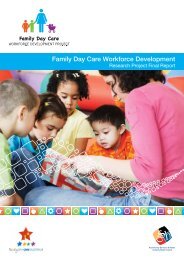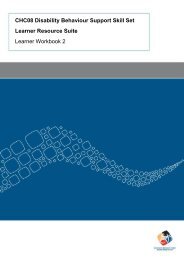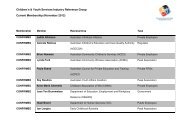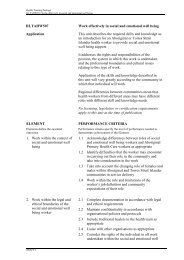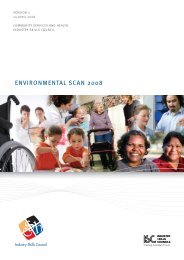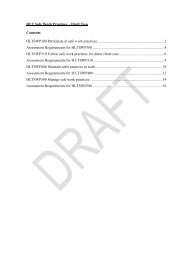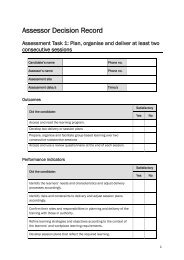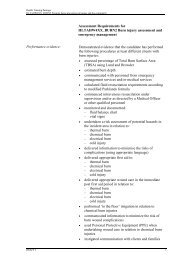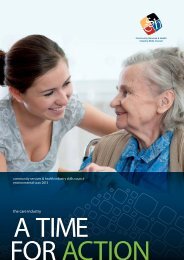A Snapshot of Early Childhood Development in Australia 2012
A Snapshot of Early Childhood Development in Australia 2012
A Snapshot of Early Childhood Development in Australia 2012
Create successful ePaper yourself
Turn your PDF publications into a flip-book with our unique Google optimized e-Paper software.
Comparative resultsThe <strong>2012</strong> AEDI collected data on 289,973 children <strong>in</strong> their first year <strong>of</strong> formal full-time school,compared with 261,147 children <strong>in</strong> 2009, represent<strong>in</strong>g a response rate <strong>of</strong> 96.5 per cent and97.5 per cent respectively.Approximately one <strong>in</strong> five (22.0 per cent) children enrolled <strong>in</strong> their first year <strong>of</strong> formal full-timeschool are developmentally vulnerable on one or more doma<strong>in</strong>s <strong>in</strong> <strong>2012</strong>, compared with23.6 per cent <strong>in</strong> 2009.A little more than four <strong>in</strong> 10 (43.2 per cent) Indigenous children are developmentally vulnerableon one or more doma<strong>in</strong>s <strong>in</strong> <strong>2012</strong>, compared with close to five <strong>in</strong> 10 (47.4 per cent) <strong>in</strong> 2009.Nationally, a lower proportion <strong>of</strong> children are developmentally vulnerable across each <strong>of</strong> the fivedevelopmental doma<strong>in</strong>s <strong>in</strong> <strong>2012</strong> compared with 2009 except <strong>in</strong> the physical health and wellbe<strong>in</strong>gdoma<strong>in</strong>, which rema<strong>in</strong>s unchanged at 9.3 per cent.6



